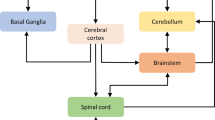Overview
- Authors:
-
-
Farzin Asadi
-
Maltepe University, Istanbul, Turkey
-
Sawai Pongswatd
-
King Mongkut’s Institute of Technology, Ladkrabang, Thailand
Access this book
Other ways to access
About this book
A microcontroller is a compact, integrated circuit designed to govern a specific operation in an embedded system. A typical microcontroller includes a processor, memory, and input/output (I/O) peripherals on a single chip. When they first became available, microcontrollers solely used Assembly language. Today, the C programming language (and some other high-level languages) can be used as well. Some of advanced microcontrollers support another programming technique as well: Graphical programming. In graphical programming, the user does not write any code but draws the block diagram of the system he wants. Then a software converts the drawn block diagram into a suitable code for the target device. Programming microcontrollers using graphical programming is quite easier than programming in C or Assembly. You can implement a complex system within hours with graphical programming while its implementation in C may take months. These features make the graphical programming an important option for engineers. This book study the graphical programming of STM32F4 high-performance microcontrollers with the aid of Simulink\textregistered\ and Waijung blockset. Students of engineering (for instance, electrical, biomedical, mechatronics and robotic to name a few), engineers who work in industry, and anyone who want to learn the graphical programming of STM32F4 can benefit from this book. Prerequisite for this book is the basic knowledge of MATLABi\textregistered/Simulink\textregistered.
Similar content being viewed by others
Article
Open access
23 February 2024
Table of contents (5 chapters)
-
Front Matter
Pages i-xiii
-
- Farzin Asadi, Sawai Pongswatd
Pages 1-54
-
- Farzin Asadi, Sawai Pongswatd
Pages 55-111
-
- Farzin Asadi, Sawai Pongswatd
Pages 113-127
-
- Farzin Asadi, Sawai Pongswatd
Pages 129-145
-
- Farzin Asadi, Sawai Pongswatd
Pages 147-156
-
Back Matter
Pages 157-169
Authors and Affiliations
-
Maltepe University, Istanbul, Turkey
Farzin Asadi
-
King Mongkut’s Institute of Technology, Ladkrabang, Thailand
Sawai Pongswatd
About the authors
Farzin Asadi received his B.Sc. in Electronics Engineering, M.Sc. in Control Engineering, and Ph.D. in Mechatronics Engineering. Currently, he is with the Department of Electrical and Electronics Engineering at Maltepe University, Istanbul, Turkey. Dr. Asadi has published more than 40 international papers and 15 books. He is on the editorial board of 7 scientific journals as well. His research interests include switching converters, control theory, robust control of power electronics converters, and robotics.Sawai Pongswatd received his B.Sc. in Instrumentation Engineering, M.Sc. in Electrical Engineering, and Ph.D. in Electrical Engineering. Currently, he is with the Department of Instrumentation and Control Engineering, King Mongkut’s Institute of Technology Ladkrabang (KMITL), Bangkok, Thailand. Dr. Pongswatd is a chairman of technical committee of Thai Industrial Standards Institute and instructor of Fieldbus Certified Training Program (FCTP). His research interest includes power electronics, energy conversion, and industrial applications.




